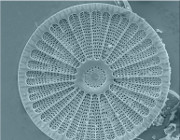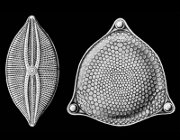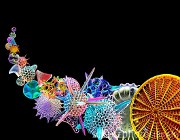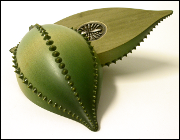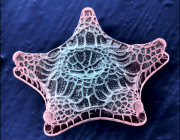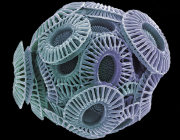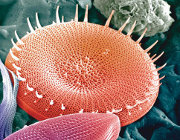Home :: List of Publicly Available Datasets :: Paraphysomonas Imperforata PA2
Paraphysomonas Imperforata PA2
Downloads:
| Principle Investigator(s) | Brian Palenik |
|---|---|
| External sample ID | ParaphysomonasNOSYN |
| NCGR Sample ID | MMETSP0103 |
| Sample accession number | CAM_SMPL_002383 |
| Assembly accession number | CAM_ASM_000201 |
| Combined Assembly Name | Paraphysomonas-imperforata-PA2 |
| Genus | Paraphysomonas |
| Species | Imperforata |
| Strain | PA2 |
| Clonal | Yes |
| Axenic | No |
| Prelim. NCBI Taxon ID | 37642 |
| 18S rRNA | |
| Importance of organism and transcriptomes | Paraphysomonas species consume bacteria including cyanobacteria and small phytoplankton as prey, and thus are involved in recycling of nutrients trhough the microbial loop. They have been important model organisms for studying grazer-prey dynamics and are ubiquitous in marine environments, althhough at relatively low numbers. They may be higly responsive to bloom conditions. This isolate was obtained from the SIO pier (UCSD, La Jolla, CA) during a Synechococcus bloom, has been in culture for several years and grows on a single Synechococcus strain and contaminating bacteria as food. This species is important for phylogenetic reasons as part of a poorly sampled group and for ecological reasons. We would hope to compare its transcriptome during growth with and without Synechococcus and to other nanoflagellates growing with and without Synechococcus to better understand the mechanisms of synechococcus recognition and digestion. |
| Additional citations and references | EL Lim, Mark R. Dennett, David A. Caron (1999) The Ecology of Paraphysomonas imperforata Based on Studies Employing Oligonucleotide Probe Identification in Coastal Water Samples and Enrichment Cultures Limnology and Oceanography Vol. 44: 37-51. |
| Environmental Data | |
| Primary citation for organism's characterization, if available | Caron DA, Lim EL, Dennett MR, Gast RJ, Kosman C, DeLong EF (1999) Molecular phylogenetic analysis of the heterotrophic chrysophyte genus Paraphysomonas (Chrysophyceae), and the design of rRNA-targeted oligonucleotide probes for two species. J. Phycol. 35 (4), 824-837 (1999) |
| Experimental Data | |
| Date of experiment | 16-MAY-11 |
| Growth medium | f/4 amended seawater |
| Temperature (ºC) | 20 |
| Salinty (psu) | 34 |
| pH | 8 |
| Light (µmol photons / m2 / sec) | 20 |
| Day portion of day:night cycle in hours | 24 |
| Nitrate (μmol/L) | 441.23 |
| Phosphate (μmol/L) | 18.15 |
| Trace elements (total) (nmol/L) | 12.25 |
| Prey organism, if applicable (genus and species) | Unknown bacteria |

